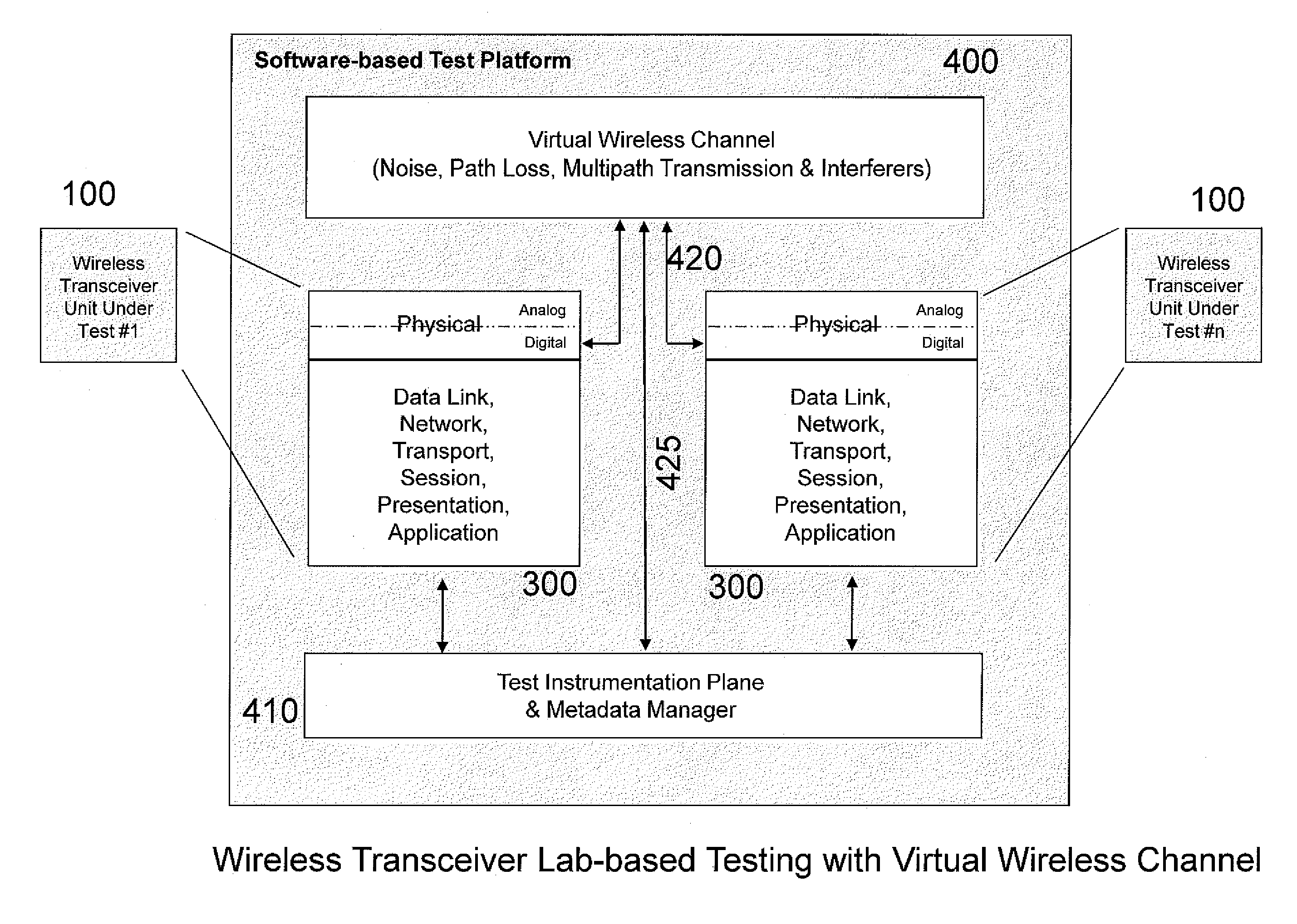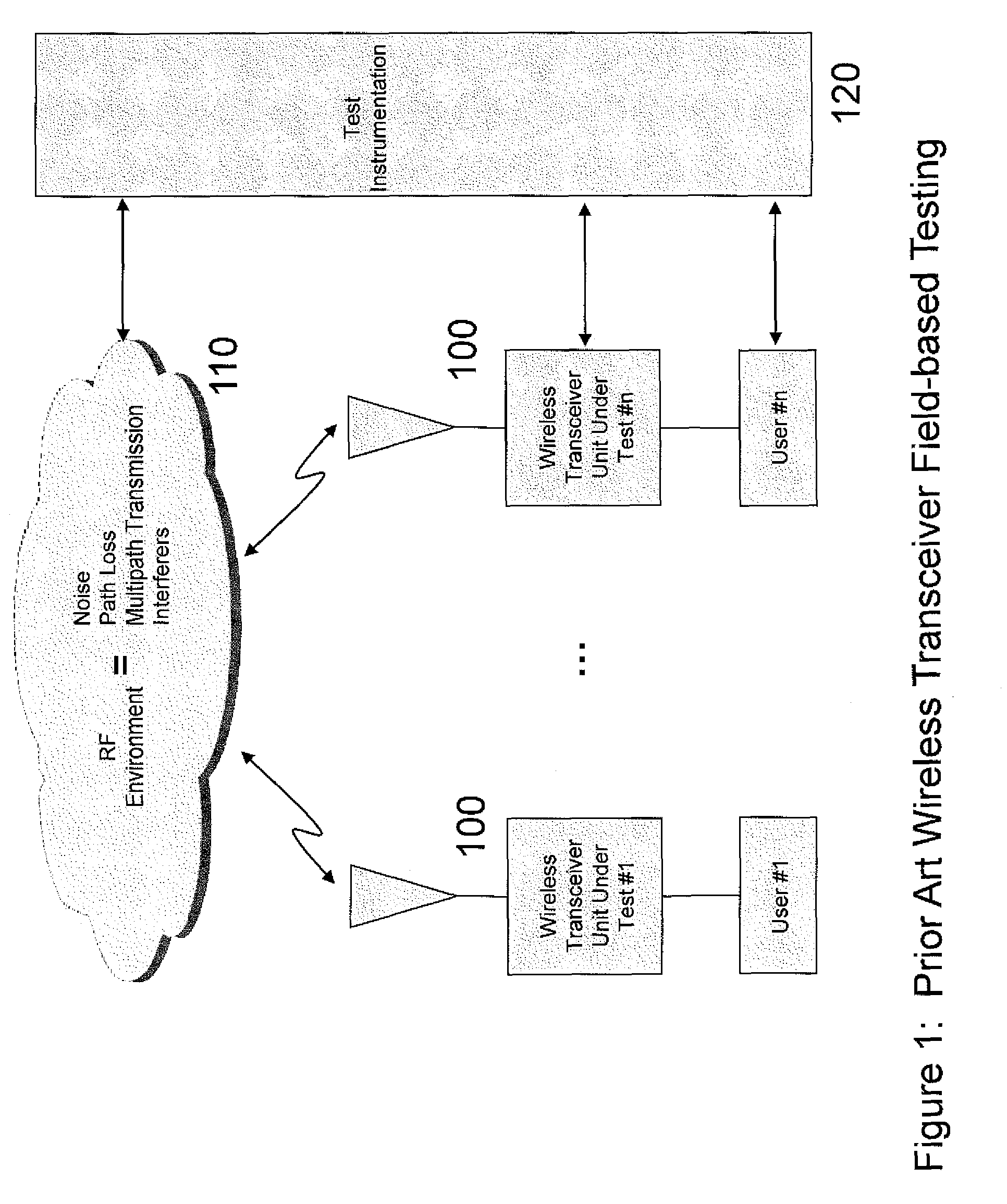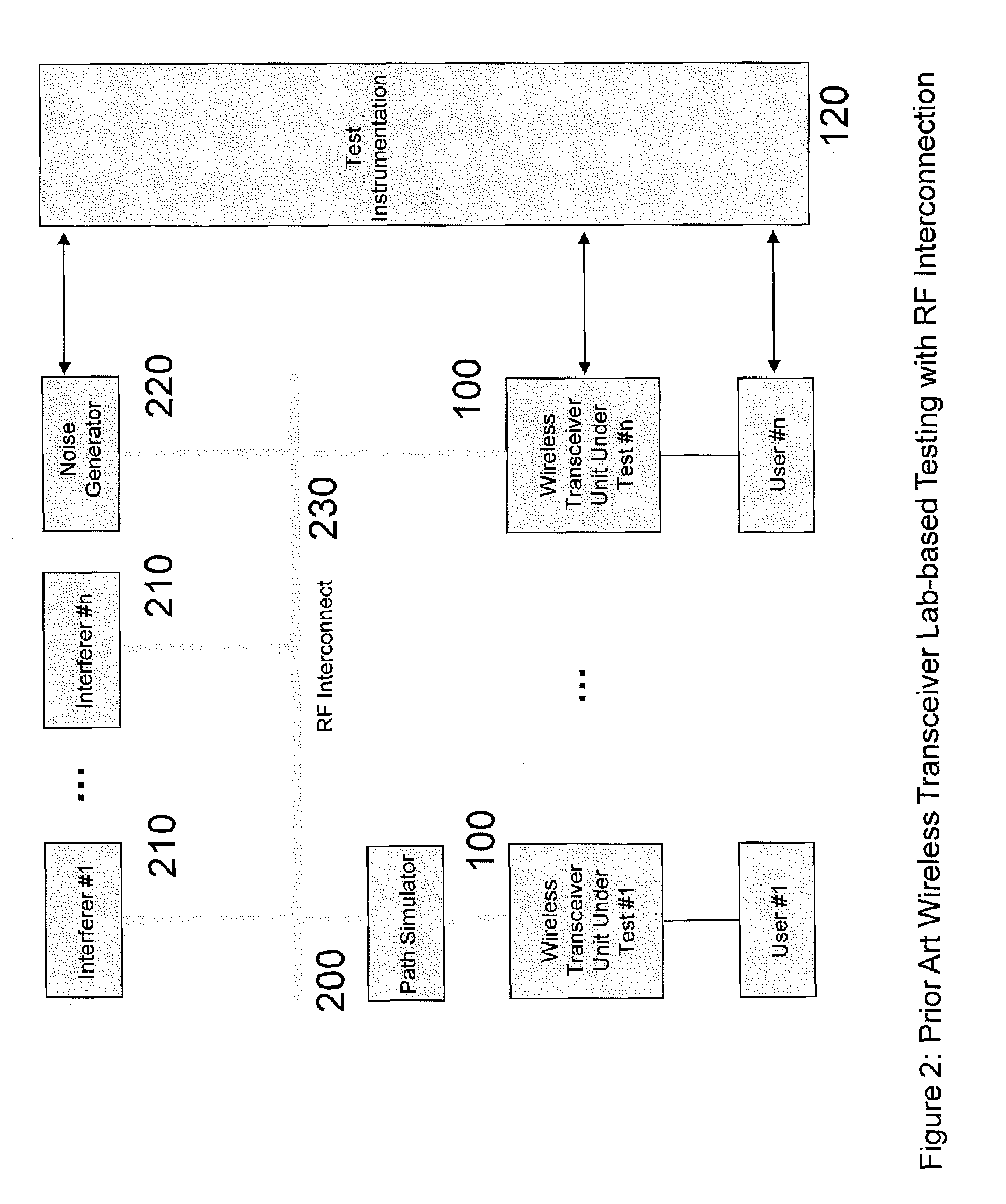Wireless transceiver test bed system and method
a test bed and transceiver technology, applied in the direction of receiver monitoring, transmission monitoring, line-transmission details, etc., can solve the problems of inability to move uut to the field environment, inability to model wideband rf effects, and inability to model real-time effects
- Summary
- Abstract
- Description
- Claims
- Application Information
AI Technical Summary
Benefits of technology
Problems solved by technology
Method used
Image
Examples
Embodiment Construction
[0076]The present disclosure describes a system and method for testing wireless transceivers in the laboratory where the advantages of laboratory testing are maintained plus many unique attributes of comprehensive field testing are made possible. Two embodiments of the disclosure will be described to illustrate the system and method concepts.
[0077]As previously described, two prior art laboratory test bed approaches exist. The first uses a computer hardware and software platform to host a software model-based test bed application for wireless transceivers as illustrated in FIG. 3c. As described previously, this approach includes as its advantages simplicity, cost effectiveness, flexibility in number and type of UUT, scalability with respect to computer resources and ease of collaboration as networked computers may distribute and share processing and results. The shortcoming of the approach include realism and flexibility of the wireless channel, the potential inability to model any ...
PUM
 Login to View More
Login to View More Abstract
Description
Claims
Application Information
 Login to View More
Login to View More - R&D
- Intellectual Property
- Life Sciences
- Materials
- Tech Scout
- Unparalleled Data Quality
- Higher Quality Content
- 60% Fewer Hallucinations
Browse by: Latest US Patents, China's latest patents, Technical Efficacy Thesaurus, Application Domain, Technology Topic, Popular Technical Reports.
© 2025 PatSnap. All rights reserved.Legal|Privacy policy|Modern Slavery Act Transparency Statement|Sitemap|About US| Contact US: help@patsnap.com



